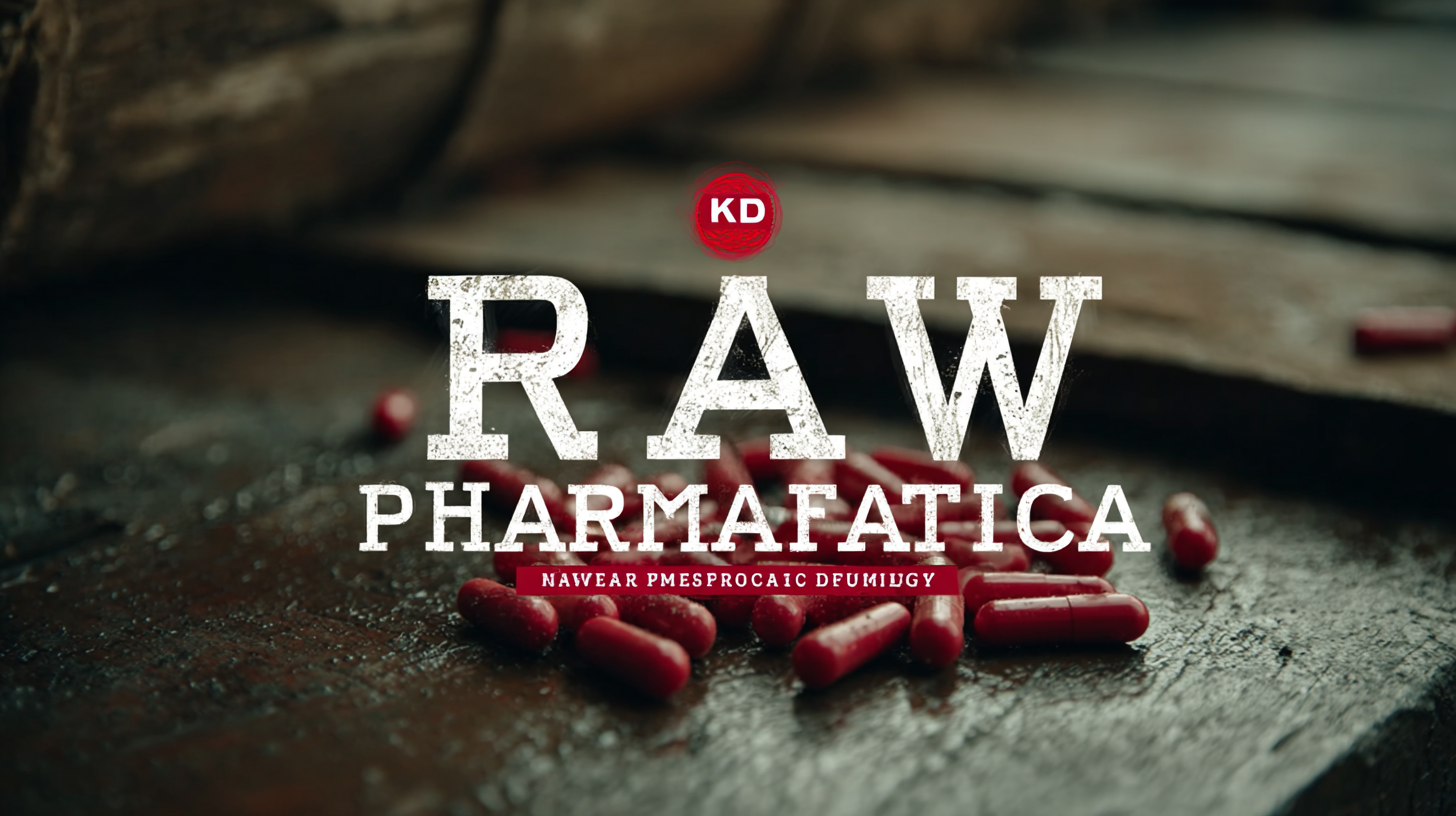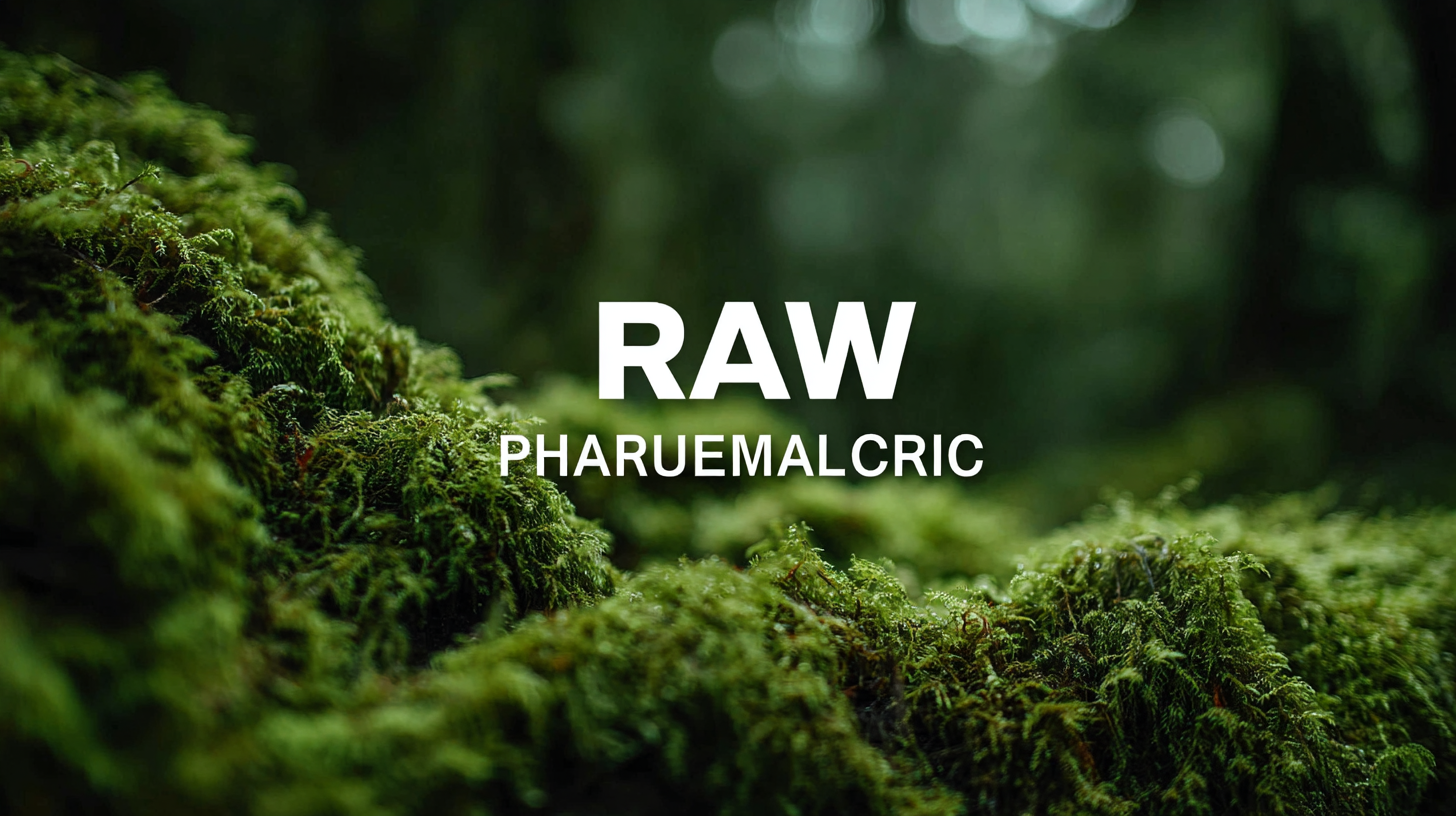
Unveiling the Specifications of the Best Raw Pharmaceutical: A Comprehensive Sourcing Guide for Global Buyers
In the ever-evolving landscape of the pharmaceutical industry, sourcing high-quality raw pharmaceutical ingredients is paramount for manufacturers and global buyers alike. With an increasing demand for efficacious and safe medications, understanding the specifications and regulatory standards that govern raw pharmaceuticals becomes essential. This guide aims to unveil the critical attributes to consider when sourcing raw pharmaceutical materials, from quality assurance and supplier reliability to compliance with international regulations.

By navigating the complexities of sourcing, buyers can ensure they obtain the best raw pharmaceutical ingredients that meet their production needs and align with global health standards. Join us as we delve into the key factors and best practices to empower your sourcing decisions and elevate the quality of your pharmaceutical products.
Key Characteristics of High-Quality Raw Pharmaceuticals for Global Procurement
When sourcing raw pharmaceuticals, understanding the key characteristics of high-quality materials is crucial for global buyers. First and foremost, purity is paramount. A high-quality raw pharmaceutical should have a purity level of at least 95% to ensure efficacy and safety. Impurities can not only affect the therapeutic action but may also pose significant health risks to end-users. Buyers should always request analytical reports to verify the purity levels of the raw materials they intend to procure.
In addition to purity, another critical aspect to consider is the source of the raw pharmaceutical. Reputable suppliers who adhere to Good Manufacturing Practice (GMP) standards are essential. These suppliers typically provide detailed documentation that traces the origin of the raw materials, ensuring transparency and reliability. It's advisable for buyers to visit manufacturing sites or conduct audits to assess these practices directly, reinforcing trust in their procurement decisions.
Tips: When evaluating suppliers, look for those with certifications like ISO and a history of compliance with regulatory standards in your region. Also, engage in discussions about their quality control measures to gain insights into their production processes. Building strong relationships with trusted suppliers can significantly enhance the procurement experience and lead to better quality assurance.
Unveiling the Specifications of the Best Raw Pharmaceutical
| Characteristic | Description | Importance |
|---|---|---|
| Purity | High purity level (≥ 99%) ensures effectiveness and safety. | Crucial for compliance with health regulations. |
| Consistency | Regular performance across batches to maintain quality control. | Ensures reliable therapeutic outcomes. |
| Source Verification | Traceable sourcing from reputable suppliers. | Minimizes risk of contamination or adulteration. |
| Testing & Certification | Availability of certificates of analysis (COA) and testing methods. | Validates quality and compliance with standards. |
| Shelf Life | Extended shelf life supports procurement convenience. | Reduces waste and stock risks for suppliers. |
| Regulatory Compliance | Adherence to local and international pharmaceutical regulations. | Essential for global market access and trust. |
Understanding the Technical Specifications: What Buyers Need to Know
When sourcing raw pharmaceuticals, understanding technical specifications is crucial for buyers aiming to make informed decisions. Buyers must delve into the critical parameters that define quality and compliance in pharmaceuticals. This includes comprehending active pharmaceutical ingredients (APIs), excipients, potency, and the manufacturing processes involved. By familiarizing themselves with these specifications, buyers can ensure that the products meet regulatory standards and are suitable for their intended use.
 Additionally, the landscape of purchasing is evolving, with modern buyers needing to consider factors beyond just pricing. Hidden costs, such as shipping and customs duties, can significantly impact the overall expense. Buyers should adopt a comprehensive approach to evaluate suppliers, looking closely at their certifications, quality control measures, and performance history. This holistic understanding will not only protect buyers from potential pitfalls but also empower them to negotiate favorable terms, ensuring a quality supply chain in the competitive pharmaceutical market.
Additionally, the landscape of purchasing is evolving, with modern buyers needing to consider factors beyond just pricing. Hidden costs, such as shipping and customs duties, can significantly impact the overall expense. Buyers should adopt a comprehensive approach to evaluate suppliers, looking closely at their certifications, quality control measures, and performance history. This holistic understanding will not only protect buyers from potential pitfalls but also empower them to negotiate favorable terms, ensuring a quality supply chain in the competitive pharmaceutical market.
Top Raw Pharmaceutical Types for Diverse Applications in the Market
In the rapidly evolving pharmaceutical industry, the demand for diverse raw pharmaceuticals is surging, driven by innovative applications and advancements in biotechnology. Among the top raw pharmaceutical types gaining traction are therapeutic peptides, which have shown significant progress due to new production and modification technologies. With the market for therapeutic peptides expanding, industry players must stay informed about the latest technological advancements and regulatory requirements to harness their potential effectively.
Another notable segment is the pectin market, which was valued at approximately USD 1.0 billion in 2019 and is expected to grow at a compound annual growth rate (CAGR) of 6.5%. Pectin, known for its gelling, thickening, and stabilizing properties, is increasingly utilized in pharmaceutical formulations, especially as a natural excipient and in drug delivery systems. This growth reflects a broader trend in the market, wherein clean-label and plant-based ingredients are becoming more relevant to global buyers focused on sustainability.
Furthermore, the rise of green surfactants and biodegradable polymers showcases a notable shift towards environmentally friendly raw materials in pharmaceutical applications. As companies strive for sustainability, employing biopolymers and biosurfactants can enhance product appeal while meeting the regulatory and consumer demands for eco-conscious sourcing. The integration of these materials not only addresses environmental concerns but also positions key players favorably in a competitive market landscape.
Essential Metrics and Standards for Sourcing Raw Pharmaceuticals Effectively
In the fiercely competitive pharmaceutical industry, sourcing raw materials effectively is paramount for ensuring product quality and operational efficiency. Essential metrics for global buyers include rigorous standards for supplier quality, cost-effectiveness, and reliable delivery mechanisms. A recent industry report highlighted that 67% of pharma companies prioritize supplier diversity as a strategic move to mitigate disruptions in the supply chain. This shift not only improves resilience but also fosters innovation through a broader range of sourcing options.
To optimize the supply chain from raw material procurement to order fulfillment, companies must adopt an integrated approach that emphasizes transparency and agility. A study revealed that organizations employing digital technologies such as big data analytics and blockchain saw a 30% increase in efficiency across their supply chains. By leveraging these advancements, pharmaceutical companies can minimize risks associated with substandard and falsified medical products, which remain a significant challenge, impacting both consumer safety and brand trust. Focusing on these essential metrics and standards will empower global buyers to make informed decisions and enhance the integrity of their supply chains.
A Step-by-Step Guide to Evaluating Raw Pharmaceutical Vendors Globally
 Evaluating raw pharmaceutical vendors globally requires a systematic approach to ensure that buyers can confidently source high-quality materials. A key factor in this evaluation is compliance with regulatory standards. According to a report by MarketsandMarkets, the global pharmaceutical outsourcing market is projected to reach $400 billion by 2025, underscoring the importance of selecting reputable suppliers who adhere to Good Manufacturing Practices (GMP) and other regulations.
Evaluating raw pharmaceutical vendors globally requires a systematic approach to ensure that buyers can confidently source high-quality materials. A key factor in this evaluation is compliance with regulatory standards. According to a report by MarketsandMarkets, the global pharmaceutical outsourcing market is projected to reach $400 billion by 2025, underscoring the importance of selecting reputable suppliers who adhere to Good Manufacturing Practices (GMP) and other regulations.
Tips: Always request certificates of analysis (CoA) and quality management system documentation from potential suppliers. This documentation can provide insights into their quality control processes and ensure that their products meet the required pharmaceutical standards.
Another critical aspect is the vendor's track record and reliability. Evaluating customer testimonials and industry certifications can provide a clearer picture of a supplier’s reputation. A study published in the Journal of Pharmaceutical Sciences highlighted that 67% of pharmaceutical companies focus on supplier risk management to avoid disruptions in their supply chain.
Tips: Use tools like supplier scorecards to assess vendor performance regularly. This method can help in identifying any potential risks associated with their operations, allowing for proactive management of sourcing strategies.
